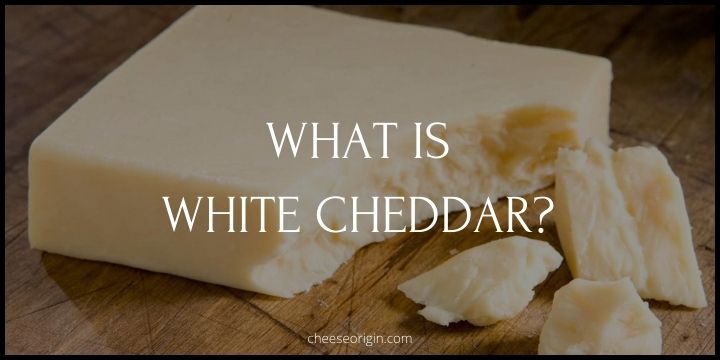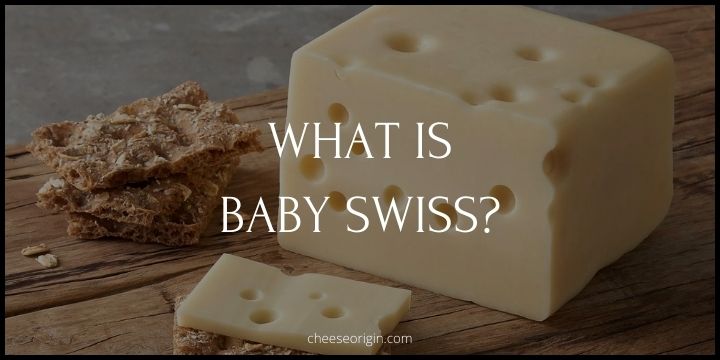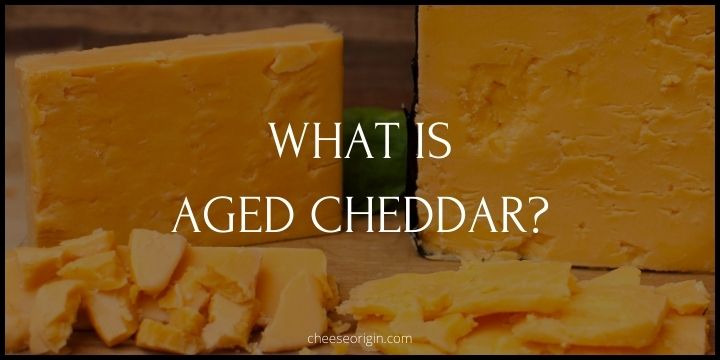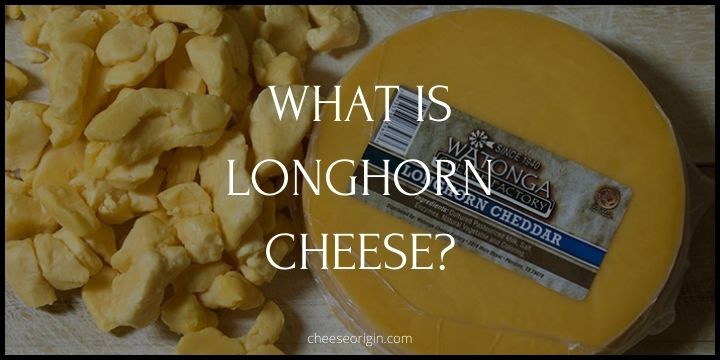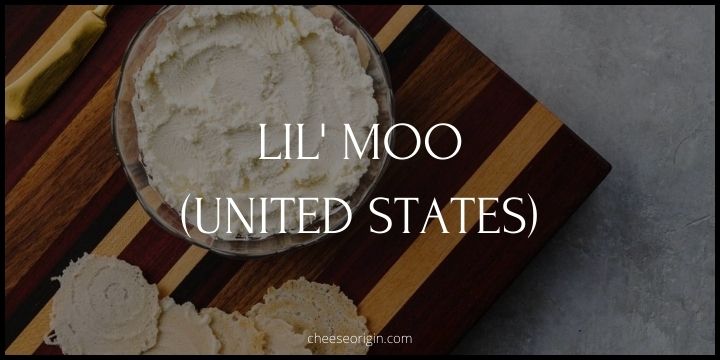What is Scamorza? A Guide to Italy’s Hidden Gem
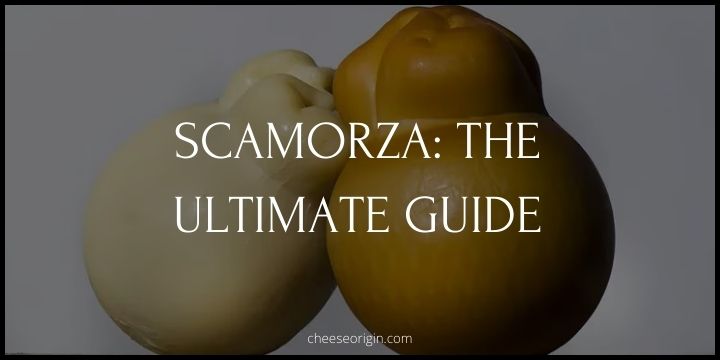
Welcome to a culinary journey off the beaten path, where we explore the hidden corners of Italy’s rich and diverse cheese landscape. Today, we turn our spotlight onto an unsung hero that deserves more attention: Scamorza, Italy’s hidden gem.
This pear-shaped delight, often overshadowed by its popular siblings Mozzarella and Provolone, offers a unique flavor profile that is both comforting and intriguing.
In this guide, we will embark on a gastronomic adventure, unraveling the mystery of Scamorza, its origins, production process, pairing suggestions, and why it deserves a place on your cheese board.
So, buckle up and prepare your taste buds for a deliciously cheesy exploration into the world of Scamorza!
Quick Facts About Scamorza
| Quick Facts | Description |
|---|---|
| Origin | Italy |
| Milk Source | Cow’s milk |
| Texture | Semi-soft, elastic |
| Flavor | Mild, creamy |
| Color | Pale yellow, or smoked variety is light brown |
| Aging Process | Few hours to several days |
| Uses | Ideal for melting, grilling or on a cheese platter |
| Production Process | The curd is heated, stretched, molded into a pear shape, and then usually hung to dry |
What is Scamorza?
Scamorza is an Italian, spun paste cow’s milk cheese belonging to the pasta filata family. Shaped similar to a provolone in pear shape, it is available in many other forms as well. A semi-soft white cheese with a texture comparable to that of a firm, dry Mozzarella, Scamorza is made throughout Apulia and in some parts of Campania and Molise.
The cheese is made from pasteurized cow’s milk or from a mixture of cow and sheep milk. At the end of the cheese making process, which is similar to Mozzarella, the cheeses are hanged to dry for about 24 hours. The process of ripening the cheese has been briefly halted to deliver it fresh at the peak of its flavor.
In smoking, the cheese obtains a golden, glossy crust and acquires a distinct, strong smoky flavor that complements the original taste of the cheese. If smoked, it is called ‘Scamorza Affumicata’.
Is Scamorza the same as Mozzarella?
While Scamorza and Mozzarella are both Italian cheeses made from cow’s milk, they are not the same. The primary difference lies in their production process and the resulting texture and flavor.
| Aspect | Scamorza | Mozzarella |
|---|---|---|
| Origin | Italy | Italy |
| Milk | Cow’s milk | Cow’s or Buffalo’s milk |
| Texture | Semi-soft, firm | Soft |
| Aging Process | Dried and aged for about two weeks | Fresh, typically consumed within a few days |
| Flavor | Intense, slightly tangy | Mild, milky |
| Appearance | Pear-shaped with a smooth, thin rind | Ball-shaped, no rind |
| Typical Use | Grilled, baked, in pasta dishes | Salads, pizza, pasta, fresh with tomatoes |
Mozzarella:
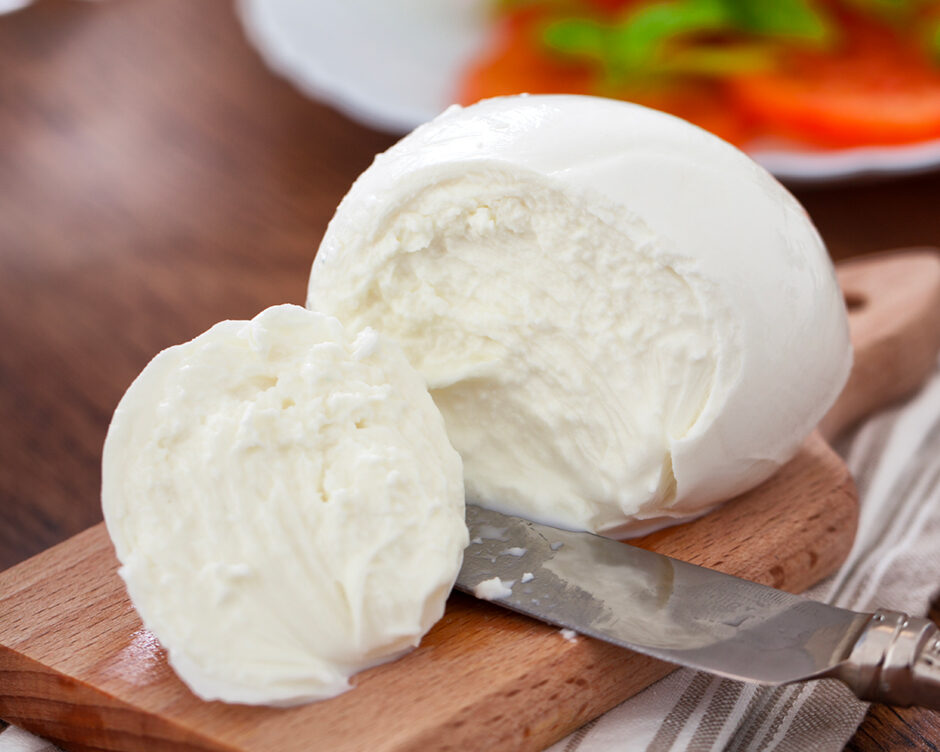
Mozzarella is a fresh cheese, typically consumed within a few hours or days of production. It has a soft, moist texture and a mild, milky flavor.
Scamorza:

Scamorza, on the other hand, is a semi-soft cheese that undergoes a drying and aging process, which typically lasts for about two weeks. This process gives Scamorza a firmer texture and a more intense, slightly tangy flavor compared to Mozzarella.
In terms of appearance, Scamorza is usually pear-shaped with a smooth, thin rind, while Mozzarella is often ball-shaped with no rind.
While Scamorza and Mozzarella might share some similarities, they are distinctly different cheeses each offering unique characteristics.
>> Click here to read our in-depth guide on Mozzarella
What does Scamorza taste like?
Scamorza is a semi-soft, cow’s milk cheese from Italy that is known for its unique flavor profile. It has a more intense and slightly tangy flavor compared to Mozzarella.
The taste of Scamorza can be described as rich and savory with a slightly smoky note if it’s the smoked variety (Scamorza Affumicata). It also has a pleasant elasticity to it, which gives it a satisfying chewiness. The outer rind of the cheese has a slightly salty taste, while the inside is milder and creamier.
Overall, Scamorza offers an interesting mix of flavors that make it a versatile cheese in cooking, capable of adding depth and richness to a wide range of dishes.
Scamorza tasting notes
- Rich, savory flavor profile
- Slightly tangy compared to milder cheeses like Mozzarella
- Smoky note if it’s the smoked variety (Scamorza Affumicata)
- Pleasant elasticity leading to a satisfying chewiness
- Slightly salty taste in the outer rind
- Milder and creamier inside
What is Scamorza cheese similar to? 6 good substitutes
| Cheese | Description |
|---|---|
| Mozzarella | Mozzarella is the closest to Scamorza in terms of production process and origin. Both are Italian pasta filata cheeses made from cow’s milk. However, Scamorza is aged longer, giving it a firmer texture and more intense flavor. Smoked Mozzarella can mimic the smoky flavor of Scamorza Affumicata. |
| Cheddar | Cheddar can be a good substitute due to its firmness and rich flavor. It doesn’t have the same elasticity as Scamorza, but it melts well and can be used in a variety of dishes. |
| Provolone | Like Scamorza, Provolone is an Italian pasta filata cheese that is aged and has a smoky flavor, especially in its smoked variety. It also melts well, making it a good substitute in recipes. |
| Tallegio | Tallegio is another Italian cow’s milk cheese. It’s more pungent than Scamorza, but it shares a similar creamy texture. Its robust flavor can provide depth to dishes where Scamorza is used. |
| Burrata | While Burrata is a fresh cheese with a creamy interior, it can provide a similar mild, milky flavor as Scamorza. However, it won’t provide the same firm texture or smoky notes. |
| Halloumi | Halloumi and Scamorza are similar because they are both semi-soft cheeses with a high melting point, allowing them to retain their shape when grilled or fried. |
Is Scamorza a healthy cheese?
Scamorza is a cheese rich in vitamins and minerals such as phosphorus, copper, vitamin A, and iron. It also contains a significant amount of protein, which is essential for muscle growth and repair.
However, like many cheeses, it’s high in calories, fat, and sodium, which should be considered if you’re monitoring your intake of these nutrients.
Here are some key nutritional aspects of Scamorza:
- It’s a good source of calcium (20% of daily value) and phosphorus, both of which support bone health.
- It contains significant amounts of protein (22g per serving), making it a good option for those seeking to increase their protein intake.
- It’s relatively low in carbohydrates, making it suitable for low-carb diets.
- It’s high in saturated fat (16g per serving) and sodium (2210mg per serving), which may not be suitable for those with heart disease or high blood pressure.
Scamorza nutrition facts
| Nutrient | Amount per 30g serving |
|---|---|
| Calories | 72-100 |
| Carbohydrates | 0-1.6g |
| Fat | 4.8-16g |
| Protein | 7-22g |
| Sodium | 2210mg |
| Cholesterol | 275mg |
| Vitamin A | 4% of daily value |
| Iron | 2% of daily value |
| Calcium | 20% of daily value |
Is Scamorza like Halloumi?
Scamorza and Halloumi are both semi-soft cheeses that hold their shape when heated, making them excellent choices for grilling or frying. They share a similar texture and have the unique property of melting without losing their shape.
Here are some key similarities and differences:
| Attributes | Scamorza | Halloumi |
|---|---|---|
| Origin | Italy | Cyprus |
| Texture | Soft and pliable | Firm and rubbery |
| Flavor | Mild, creamy and slightly sweet. Smoky if smoked | Salty, tangy with a hint of mint |
| Melting Point | High, becomes soft and oozy when heated | Very high, maintains its shape even when grilled or fried |
| Preparation | Often smoked | Often served fresh or grilled |
| Serving Suggestions | Can be eaten fresh, melted in sandwiches, or used in cooking. Becomes chewy if not served immediately after cooking | Frequently grilled or fried. Maintains its texture even when cooled |
While Scamorza and Halloumi are not identical, they share enough characteristics to be used interchangeably in some recipes, especially those that involve grilling or frying the cheese.
>> Click here to read our in-depth guide on Halloumi
How do Italians eat Scamorza?
Italians enjoy Scamorza in various ways. Here are some of the popular methods:
- On Pizza: Instead of shredding it, they slice the cheese and lay it out on top of the pizza, allowing it to retain its shape.
- Grilled: Grilled scamorza is a popular dish, often served with crusty bread and a simple green salad or tomato and basil salad.
- Baked: Baked scamorza with grilled bruschetta is another delicious way to eat Italian scamorza affumicata, which is smoked, aged mozzarella cheese.
- Raw: Scamorza can be served at room temperature and does not need to be cooked. It can be taken out of the fridge 1 or 2 hours before serving and can be served whole or in slices.
- In Sandwiches or Main Courses: Traditional scamorza cheese is used a lot in the kitchen, both for preparing pizzas and sandwiches and for vegetarian main courses. An example is a vegetable pie.
- As an Appetizer: Scamorza cheese doesn’t necessarily need to be cooked, so it’s perfectly good to be eaten raw, by itself as an appetizer, or as part of a meat and cheese board.
What goes well with Scamorza? Pairing guide
Food that goes well with Scamorza:
| Category | Foods |
|---|---|
| Cured Meats | Prosciutto |
| Vegetables | Roasted vegetables, peppers, aubergines, radicchio, zucchini, sun-dried tomatoes |
| Pasta | Pasta dishes, especially those with cherry tomatoes |
| Pizza | Pizza topped with Scamorza and other ingredients |
| Bread | Garlic bruschetta |
| Others | Sausage, lemon leaves, eggplant |
Also read: 11 Best Crackers that Pair Well with Cheese
Beverage that goes well with Scamorza:
| Category | Beverages |
|---|---|
| Wine | Full-bodied red wines, White wines, Sparkling wines |
| Beer | Craft beers, Pale Ales |
| Spirits | Whisky, Brandy |
| Non-Alcoholic | Apple cider, Grape juice |
Also read: Best Wine and Cheese Pairings: The Ultimate Guide
Where to buy Scamorza?
- Whole Foods Market
- Instacart
- Amazon
- Supermarket Italy
- Yummy Bazaar
- Mozzco
- Safeway
- Di Stefano Cheese
- Fortuna’s Sausage
- Albertsons
Please note that availability might vary depending on your location and the store’s inventory.
The history and origin of Scamorza
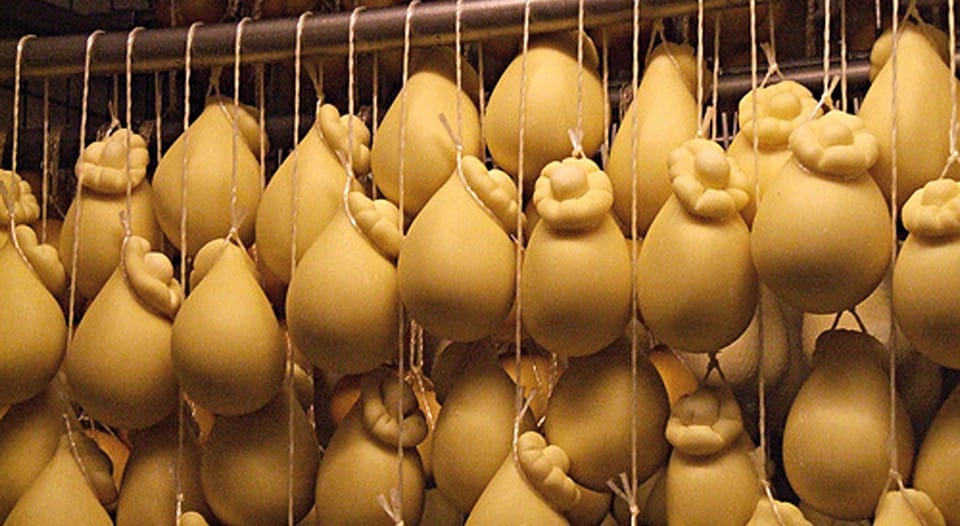
Scamorza is an Italian, spun-paste cow’s milk cheese belonging to the pasta filata family. Its name comes from the Italian phrase “capa mozza” which means “severed head.” This is likely a reference to the cheese’s shape, as it usually resembles a round, slightly squashed ball.
The cheese has a history that dates back to ancient times. Some food historians suggest that it was first made in the Southern regions of Italy, specifically in Apulia and Calabria. It was traditionally a by-product of mozzarella, made from the curds left over after mozzarella production. The curds would be heated, stretched, and then hung to age, creating a cheese with a distinctive pear shape and a slightly stronger flavor than mozzarella.
Over time, Scamorza has become highly valued for its versatility and distinctive taste. It is often used in cooking, particularly in baked dishes, where it melts beautifully. There are two main types of Scamorza available today – white Scamorza, which is fresh, and smoked Scamorza, which has a golden-brown exterior and a slightly smoky flavor.
Please note that while the above information outlines the general history and origin of Scamorza, the exact details may vary depending on different sources.
Frequently Asked Questions
1. Can Scamorza be eaten raw?
Yes, Scamorza cheese can be eaten raw. It has a delicate and mild flavor when it’s fresh which many people enjoy. It’s often used in salads or antipasto dishes.
However, it’s also popularly used in cooked dishes because it melts well. In particular, the smoked variety of Scamorza adds a unique flavor to various recipes when melted.
2. Can you use Scamorza on pizza?
Absolutely! Scamorza cheese is a great choice for pizza. It’s a semi-soft Italian cheese that melts well, similar to mozzarella, but it has a slightly more assertive flavor which can add a new dimension to your pizza.
The smoked version of Scamorza (Scamorza Affumicata) can give your pizza a unique smoky flavor. It’s often used in gourmet or artisanal pizzas. Just like with any other cheese, you’ll want to slice or grate it, then spread it evenly over your pizza before baking.
Remember, the key to a great pizza is balance, so be mindful of how much Scamorza you use, especially if it’s the smoked variety. Its stronger flavor can overwhelm the other ingredients if used in excess.
3. Do you eat the rind on Scamorza?
Scamorza cheese, unlike some cheeses with a hard rind, has a very thin skin that is perfectly edible. The rind is formed during the cheese’s aging process and is typically quite mild in flavor. However, some people choose to remove it due to personal preference or if it has become tough or dried out.
It’s worth noting that for smoked Scamorza, the rind can have a stronger, smoky flavor compared to the inside of the cheese. So if you enjoy that smoky taste, you might find the rind particularly delicious. As always with food, it’s really up to individual taste and preference.
4. Does Scamorza cheese need to be refrigerated?
Yes, Scamorza cheese should be refrigerated. Like most cheeses, Scamorza needs to be stored properly to maintain its freshness and prevent spoilage. After purchasing, it’s recommended to keep the cheese in your refrigerator where it can stay fresh for several weeks.
Ideally, you should wrap the cheese in waxed paper or parchment paper, then loosely in plastic wrap or a plastic bag. This allows the cheese to breathe while still retaining moisture.
Remember to let the cheese come to room temperature before serving, as this helps to enhance its flavor. Always check for signs of spoilage such as an off smell, mold, or discoloration before consuming.
Also read: What’s the Best Way to Store Cheese?
5. What does Scamorza mean in Italian?
The word “Scamorza” in Italian literally translates to “beheaded”. This name refers to the process of making the cheese, where the curd is formed into a round shape, and then a string is tied around the top, creating a sort of “head”.
The cheese is then hung by this string to age, which gives it a distinct pear or teardrop shape that appears as if it has been “beheaded”. The name is quite fitting when you consider the unique production method of this traditional Italian cheese.
6. Is Scamorza high in fat?
Scamorza cheese does contain a significant amount of fat.
However, this doesn’t necessarily mean it’s unhealthy. Like most cheeses, Scamorza also provides a good source of protein. The key is to consume it in moderation as part of a balanced diet.
7. Is Scamorza cheese salty?
Scamorza cheese is known to be lightly salted. It’s made from fresh whole milk and salted in a brine, which gives it its characteristic flavor. The taste of Scamorza can be described as a more intense version of Mozzarella, although it’s not as sharp as aged Provolone. While it isn’t overly salty, its flavor is robust and has a slight piquancy.
Also read:
- The Ultimate Guide to Gruyère: A Swiss Delicacy
- Mastering the Art of Smoked Gouda: Your Ultimate Cheese Guide
- Comté Cheese: The Golden Essential of Every Cheeseboard
- Discovering Requesón: A Guide to Spain’s Ricotta
- The Ultimate Guide to Raclette Cheese: A Melted Delight
- The Ultimate Guide to Grana Padano: Italy’s Hidden Gem
- Fior di Latte: A Comprehensive Guide to Italy’s Creamy Delight
